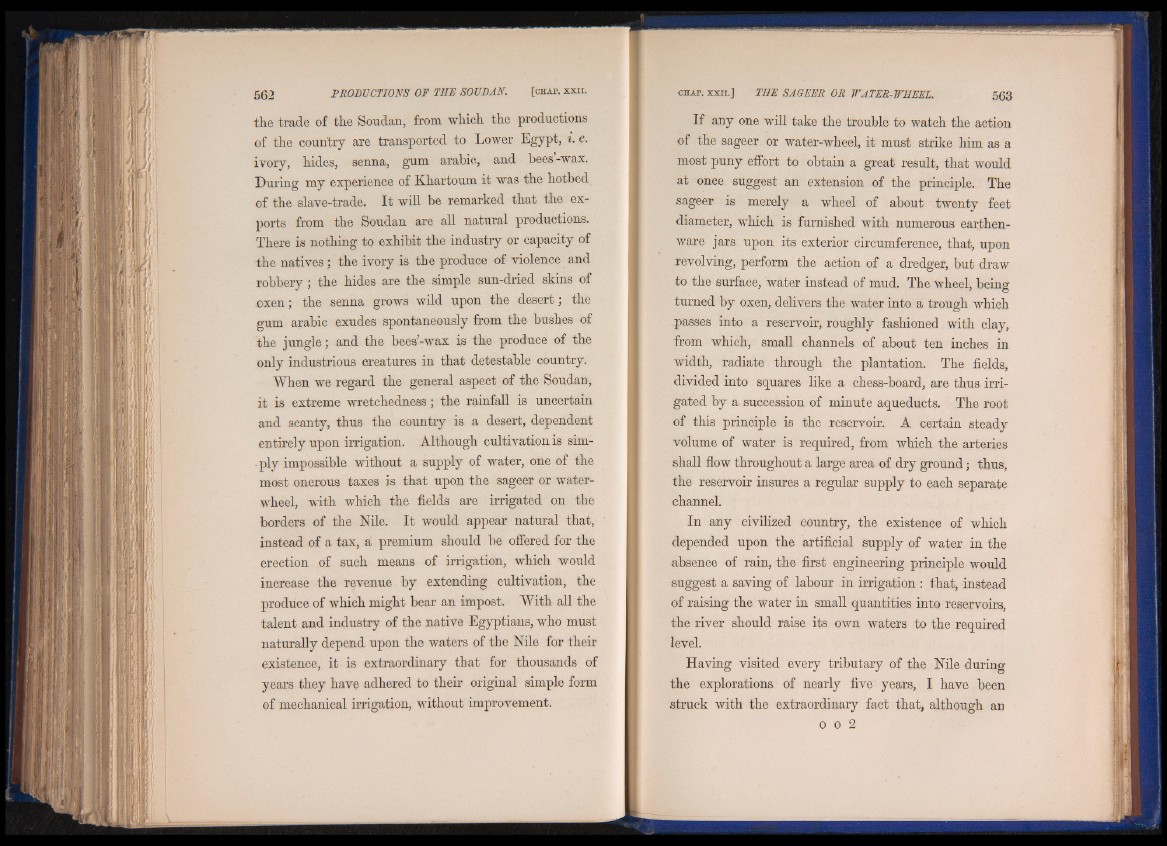
the trade of the Soudan, from which the productions
of the country are transported to Lower Egypt, i. e.
ivory, hides, senna, gum arabic, and bees -wax.
During my experience of Khartoum it was the hotbed
of the slave-trade. It will be remarked that the exports
from the Soudan are all natural productions.
There is nothing to exhibit the industry or capacity of
the natives ; the ivory is the produce of violence and
robbery; the hides are the simple sun-dried skins of
oxen; the senna grows wild upon the desert; the
gum arabic exudes spontaneously from the bushes of
the jungle; and the bees’-wax is the produce of the
only industrious creatures in that detestable country.
When we regard the general aspect of the Soudan,
it is extreme wretchedness; the rainfall is uncertain
and scanty, thus the country is a desert, dependent
entirely upon irrigation. Although cultivation is simply
impossible without a supply of water, one of the
most onerous taxes is that upon the sageer or water-
wheel, with which the fields are irrigated on the
borders of the Nile. It would appear natural that,
instead of a tax, a premium should be offered for the
erection of such means of irrigation, which would
increase the revenue by extending cultivation, the
produce of which might bear an impost. With all the
talent and industry of the native Egyptians, who must
naturally depend upon the waters of the Nile for their
existence, it is extraordinary that for thousands of
years they have adhered to their original simple form
of mechanical irrigation, without improvement.
If any one will take the trouble to watch the action
of the sageer or water-wheel, it must strike him as a
most puny effort to obtain a great result, that would
at once suggest an extension of the principle. The
sageer is merely a wheel of about twenty feet
diameter, which is furnished with numerous earthenware
jars upon its exterior circumference, that, upon
revolving, perform the action of a dredger, but draw
to the surface, water instead of mud. The wheel,7 beinOg turned by oxen, delivers the water into a trough which
-passes into a reservoir, roughly fashioned with clay,
from which, small channels of about ten inches in
width, radiate through the plantation. The fields,
divided into squares like a chess-board, are thus irrigated
by a succession of minute aqueducts. The root
of this principle is the reservoir. A certain steady
volume of water is required, from which the arteries
shall flow throughout a large area of dry ground; thus,
the reservoir insures a regular supply to each separate
channel.
In any civilized country, the existence of which
depended upon the artificial supply of water in the
absence of rain, the first engineering principle would
suggest a saving of labour in irrigation : that, instead
of raising the water in small quantities into reservoirs,
the river should raise its own waters to the required
level.
Having visited every tributary of the Nile during
the explorations of nearly five years, I have been
struck with the extraordinary fact that, although an
o o 2